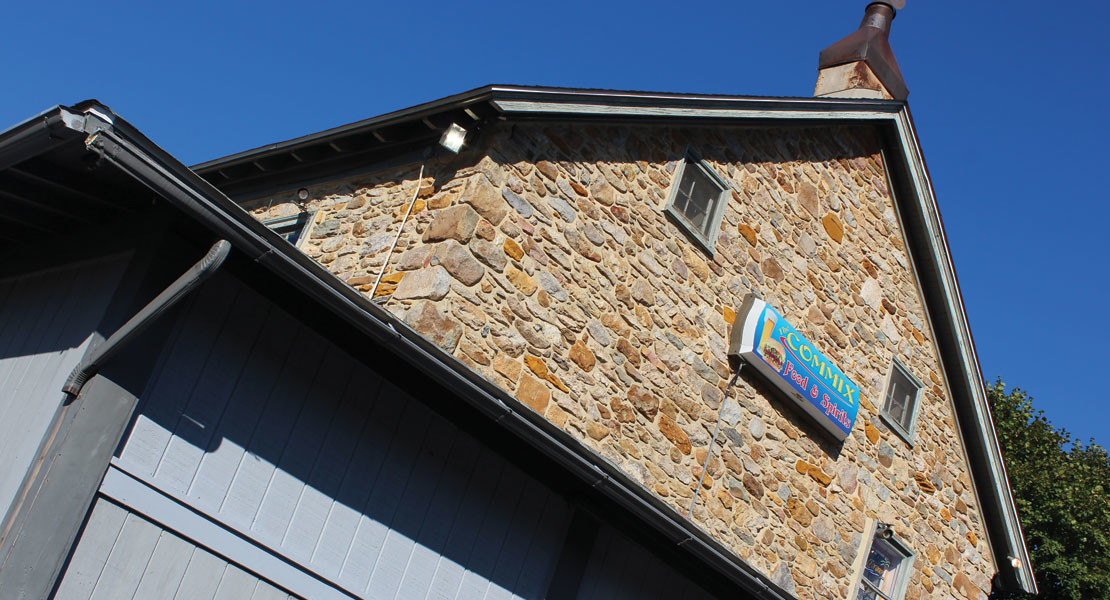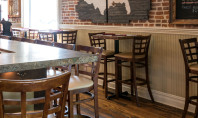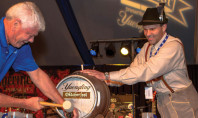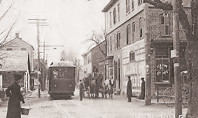Salisbury Township

Located in the southeast part of Lehigh County, Salisbury Township is tucked between Emmaus, Allentown and Bethlehem. At just over eleven square miles, it is one of the smallest townships in all of Pennsylvania. However, during the 18th Century, its residents played major roles in some of the most significant events of the era.
Solomon Jennings and the Walking Purchase
Although it’s unclear exactly when the first Europeans moved into present-day Salisbury Township (possibly as early as the 1710s), the region’s documented history begins in 1734 when the family of William Penn formally opened the area for settlement and began issuing land grants. The first “official” settler to arrive was Solomon Jennings – a man who would later become known for his role in the infamous Walking Purchase (or Walking Treaty) of 1737.
His sawmill was outfitted with a waterwheel and grindstone for sharpening bayonets, and sixteen armorers were brought in to repair muskets, saddles, scabbards and other weapons.
Jennings, along with Edward Marshall and James Yeates, were the three “walkers” who, according to the treaty, were to determine the amount of land that the Delaware Indians would grant to the Penn family by the distance they could “walk” in one and a half days. To the surprise of the Native Americans, however, Jennings and the others were actually trained runners, who, by breaking the understood “rules” of the walk, helped cheat the Delaware people out of approximately 1,200 square miles of land. This betrayal destroyed the once friendly relationship between the two people, and resulted in decades of bitter animosity. It also laid the groundwork for the Delaware Indian’s decision to side with the French during the French and Indian War of 1754-1763.
Fortunately for Solomon Jennings, he was overcome by exhaustion and forced to drop out of the walk early on the first day. This fortuitous turn allowed him to escape any direct repercussions for his role in the scandal. In contrast, Edward Marshall, the “walker” to make it the furthest distance (and thus the man who played the greatest role in the deception), spent the rest of his life hounded by Delaware warriors, who eventually murdered both his wife and son in retaliation.
David Deschler and the American Revolution
Like many residents of the Lehigh Valley, the people of Salisbury Township actively supported the Patriots’ cause during the American Revolution. In addition to raising volunteer soldiers, the township also helped provide the supplies, services and money needed by the Continental Army. Township resident David Deschler, who was described as “one of the most actively patriotic citizens of the county,” played a particularly important, if often overlooked, role in doing just this.
Deschler, who owned a grist and sawmill along the Little Lehigh River, was elected by the General Assembly of Pennsylvania as one of four Sub-Lieutenants of Northampton County in 1777, (at the time, Salisbury Township was part of Northampton County; present day Lehigh County split from Northampton County in 1812). This crucial position included, among other things, responsibility for ensuring the Continental soldiers’ equipment and armaments were kept in working order.
To do this, Deschler transformed part of his property into an armament repair and manufacturing works. His sawmill was outfitted with a waterwheel and grindstone for sharpening bayonets, and sixteen armorers were brought in to repair muskets, saddles, scabbards and other weapons. Several of his other nearby buildings were also converted into storage space for food and other military provisions for the soldiers.
While Deschler’s contributions are perhaps not as well known as the Lehigh Valley’s other war efforts (such as the hospitals in Easton and Bethlehem), the support he and the people of Salisbury Township provided was nonetheless extremely important to the Continental Army’s success.
Martin Ritter and Fries’s Rebellion
In 1799, widespread anger over a new property tax levied by Congress erupted into a full-blown rebellion in parts of Pennsylvania. Led by Bucks County auctioneer John Fries, the uprising quickly spread to the Lehigh Valley, where Salisbury Township resident Martin Ritter found himself at the center of the controversy.
Ritter, who owned a popular tavern along Emaus Avenue (today it is the Commix Hotel), hosted a meeting of disgruntled citizens on March 7, 1799. Initially provoked by the “inquisitional” tone of the property tax assessment (which was carried out by government-appointed assessors who counted the number of windows in people’s homes in order to calculate their tax rate), public opposition reached a violent peak after several people were arrested for tax resistance and imprisoned in the Sun Inn in Bethlehem. It was these arrests that prompted the meeting in Ritter’s tavern.
Incensed by the perceived injustice, the crowd at Ritter’s tavern decided to march to Bethlehem and “liberate” the prisoners. As they traveled along Emmaus Avenue, a second group of citizens, led by John Fries, joined them in their effort. By the time they reached the Sun Inn, the combined crowd had swelled to nearly 150 men and included two companies of riflemen and one company of mounted soldiers, who approached with their swords drawn. This impressively intimidating show of strength ultimately convinced the government officials to release the prisoners without a single shot being fired.
In the days following the Sun Inn incident, “Fries’s Rebellion” quieted down, and no further confrontations erupted. Worried that they had perhaps gone too far in their actions, Fries even began encouraging people to end all resistance and begin cooperating with the assessors. But despite this drastic reversal, President John Adams still decided to send in federal troops and arrest approximately thirty people on charges of sedition, insurrection and rioting. For his role in the uprising, John Fries was convicted of treason and sentenced to hang.
Although Adams would later pardon Fries and all the other participants, the president’s response turned the rebellion into a national affair that garnered widespread media attention. In the end, the march that began at Martin Ritter’s tavern helped shift popular opinion against the president and his political party, as many people viewed his response as being far too aggressive and having an “appearance of persecution.”
Did You Know
• Although “Salisbury” is the township’s official name, some people speculate that early residents actually intended for the name to be “Salzburg,” as the majority of the population were immigrants from Salzburg, Germany.
• When Salisbury Township was initially formed in 1753 it included a large part of present-day Emmaus, all of Fountain Hill and part of Allentown south of the Little Lehigh River. Over the following decades, these areas either broke off to form independent boroughs or were annexed by neighboring communities.

















